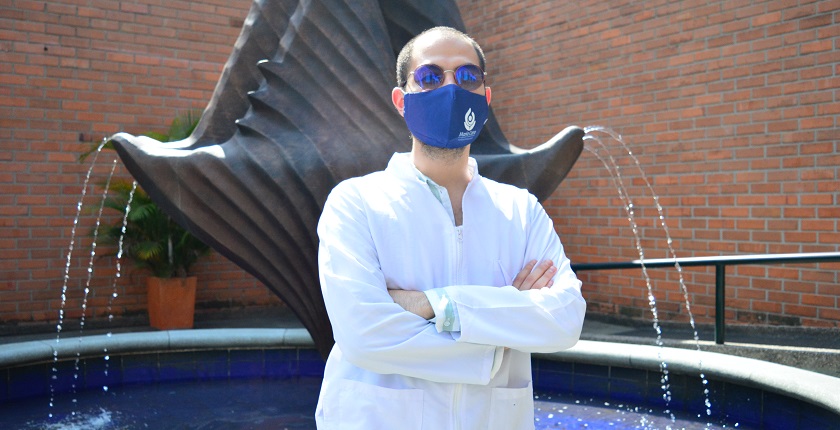Blog
Voice conservation program: approach from telepractic
- 25 enero, 2021

One of the effects that the pandemic generated by SARS-CoV-2 brought with it was the abrupt change in the established work dynamics (Cardenas & Montana, 2020). Social distancing, as a preventive measure suggested by the world health organization to cut the chain of transmission of the virus (Presidencia de la República de Colombia, 2020), in addition to the consequent migration to virtuality, placed teachers in an environment demanding for your voice. Although reverberant environments or noise in the classroom no longer exist, other factors negatively affect vocal function, including: an increase in voice intensity due to poor vocal amplification systems, sustained vocal use for long periods of time and increased stressful situations or decreased quality of sleep (Besser et al., 2020).
The aforementioned circumstances resulted in an increase in cases of vocal fatigue; This condition is defined as an increase in perceived vocal effort that occurs after maintaining prolonged use of the voice over time (Milbrath & Solomon, 2003). Aware that the professors of the María Cano University Foundation had to continue with their work, the teacher / researcher Fernando Delprado Aguirre proposed a program that comprehensively addresses the vocal health of this population.
The program was developed in 4 phases: in the first, 94 professors from all the headquarters of the María Cano University Foundation filled out an electronic questionnaire for voice demand. With these data, the prevalence of voice disorders was calculated for the population of university professors. In the second phase, the teachers enrolled in the questionnaire were contacted to schedule an observation of their vocal performance in virtual class. Those who did not demonstrate any vocal difficulties received feedback on the findings in addition to indications of vocal hygiene. Those who showed some alteration escalated to the third phase where the voice production function was assessed using multiple diagnostic tools. Finally, those who required additional therapeutic management received resonant voice therapy in weekly or fortnightly sessions as well as in follow-up sessions to monitor vocal status.
The program had a nationwide scope, receiving responses from teachers from the different branches of the University: Neiva (5), Cali (13), Popayán (7) and Medellín (69). The initial survey determined that 45% of the respondents reported symptoms consistent with vocal fatigue due to the change to the tele-education modality. Additionally, it was determined that the prevalence of people at risk of developing voice disorders was 30%; This means that out of every 100 university professors, 30 are at risk of presenting vocal symptoms. The vocal hygiene guidelines offered were aimed at controlling hydration habits and reducing phonotraumatic behaviors as well as inflammation factors of the vocal fold. These factors were specifically selected for each teacher based on what was observed during the execution of their classes: poor hydration or hydration with liquids other than water, unjustified increase in intensity, poor use of amplification systems, hawking or excessive coughing as well as few periods of rest.
The therapeutic results were variable among the 8 teachers who participated in the treatment phase. The number of sessions varied between 2 and 8 in a period of four months. Those teachers who showed greater adherence to treatment showed a decrease in the frequency and intensity scores for vocal symptoms.
Given the relevance of the program, the evidenced results were presented at the VIII National and V International Encounter of Research in Speech Therapy, a scientific event that brings together research speech therapists with national and international experience. At this same event, the program was awarded for best research for its contributions to emerging needs due to the pandemic.
Read here Academic Action at María Cano
References:
Besser, A., Lotem, S., & Zeigler-Hill, V. (2020). Psychological Stress and Vocal Symptoms Among University Professors in Israel: Implications of the Shift to Online Synchronous Teaching During the COVID-19 Pandemic. Journal of Voice. https://doi.org/10.1016/j.jvoice.2020.05.028
Cardenas, J., & Montana, J. (2020). Efecto del COVID-19 sobre las ocupaciones de trabajadores en Colombia. En Alianza Efi (Vol. 2, Número April, p. 13). https://doi.org/10.13140/RG.2.2.31376.15361
Milbrath, R. L., & Solomon, N. P. (2003). Do vocal warm-up exercises alleviate vocal fatigue? Journal of speech, language, and hearing research : JSLHR, 46(2), 422-436.
Presidencia de la república de Colombia. (2020). Decreto Número 457 del 22 de marzo de 2020 (pp. 1-14). https://dapre.presidencia.gov.co/normativa/normativa/DECRETO 457 DEL 22 DE MARZO DE 2020.pdf
